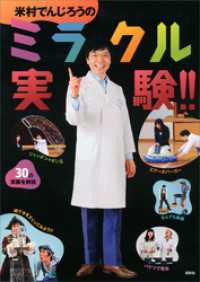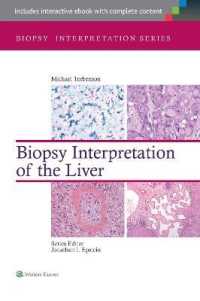Full Description
CHARGE syndrome affects approximately 1:10,000 births worldwide, is extremely complex, and has varied medical and physical manifestations. It was first described in 1979, named in 1981, and only as recently as 2004 was a gene for CHARGE found. In addition to a host of other conditions, most individuals have communication-related problems, including breathing, swallowing, hearing and balance, and speech. Each of the editors is established as an expert on CHARGE syndrome and has received the highest award bestowed by the CHARGE Syndrome Foundation, the Star in CHARGE, and represent four different disciplines: sensory genetics and neurodevelopment, genetic counseling, audiology, and psychology. They have concluded that studies have advanced to the degree that a single source of information is necessary. This, the first known book on the subject, describes the sensory, physical, and behavioral findings in CHARGE, indicates what kinds of studies need to be done to confirm the findings, and describes how these findings affect the function and development of the individual with CHARGE.
Contents
Introduction Part ISpecific Anomalies That Affect Sensory Function Eyes and Vision Auditory System and Hearing Smell Taste Touch, Pain, and Pressure Vestibular Mechanism, Balance, and Mobility Other Physical Issues Facial Palsy Fatigue Part II: Describing and Evaluating Sensory and Other Medical Issues Otorhinolaryngologic Issues Otologic Issues: Anomalies and Disease PE Tubes, Chronic Middle Ear Infections, Otologic Issues: Cochlear Implantation Rhinologic Issues Smell: The Olfactory System Audiologic Issues Overview Audiologic Assessment Obstacles to Audiologic Assessment and Modification of Audiologic Procedures Common and Distinctive Audiologic Findings Amplification Ophthalmologic Issues: Coloboma and Visual Issues Balance and the Vestibular System Airway Choanal atresia TEF/EA Cleft lip & palate Cranial nerves 9 & 10 Laryngotracheomalacia Feeding Cranial nerves 9 & 10; 7 & 12 Swallow studies and sedation Nissen and reflux Feeding tubes or buttons Constipation Heart Neurological Seizures Brain anomalies: frequency Other neurological findings Other Physical Issues Renal and Urinary Anomalies Endocrine Immune problems Skeletal anomalies Teenage and Adulthood Part III: Communication Systems and Language Development Overview Forms and functions in the language of children with CHARGE with significant language delays Prelinguistic assessment strategies and indicators of linguistic development Part IV: Developmental Issues Changes During the Life Cycle Infancy Childhood Teenage Adulthood Physical Locomotion Cognitive Social/Emotional Part V: Psychological Issues Behavioral Phenotype Neurological issues and pain Toileting Sleep Psychiatric issues and medication Parenting Attachment and Bonding Stress Part VI: Questions for Future Research Smell Adult medical issues Adult psychological issues Sensory receptors Autonomic nervous system Index







